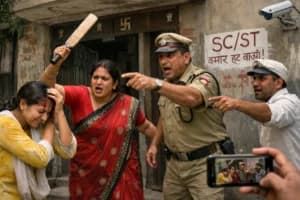Drafting is more than just putting words on paper—it is the foundation upon which the fate of legal cases is built. Recognizing its significance, Supreme Court judges recently provided invaluable advice to young Advocates-on-Record (AORs) on how well-structured drafting can shape case outcomes and influence judicial decisions.
Justice Suryakant: "Convincing Drafting is an Art"
Speaking at the AOR facilitation event organized by the Supreme Court Advocates on Record Association (SCAORA), Justice Suryakant underscored the importance of "convincing drafting." He emphasized that knowing what to disclose and what to omit is key to effective petitioning. He advised:
"Disclose all those facts which are required to be disclosed, but don't say anything without which your case can stand. So it's not necessary to repeat anything which need not be mentioned. But at the same time, do not conceal something which requires to be disclosed."
Read Also:- Supreme Court Highlights Power Struggle Between IAS, IPS & Forest Officers in Landmark Hearing
Justice Suryakant highlighted that drafting is not merely a technical skill learned in law schools but an art honed through practice. He pointed out that AORs serve as the "lifeline" of the Supreme Court since their submissions influence a judge’s perception of a case.
He shared his own journey as a first-generation lawyer, recounting how his commitment to quality drafting earned him recognition and professional growth. He reminisced:
"When the senior counsel, he retired as the Chief Justice of the High Court, saw my drafting, he got fascinated and said—‘Alright, Surya Kant, do you mind if I send you some important briefs for drafting?’ I said—‘Sir, it will be a great opportunity for me.’"
His diligence paid off when leading lawyers started engaging him for drafting work, significantly boosting his career.
The Power of Logical and Persuasive Drafting
Justice Suryakant further illustrated the importance of structuring arguments logically and persuasively. He recalled an instance where he had to redraft a bail application because the original draft mistakenly revealed defense arguments prematurely. He emphasized:
"When you draft a petition, your narrative of facts should be such that when the judge reads the first paragraph, it sparks curiosity to read the next one. Events must be so interconnected that the reader is compelled to go through the entire document. If you develop that kind of art, I can assure you that 50% of the case is won by you!"
Read Also:- Time to Address the Misuse of Public Interest Litigations: Justice BV Nagarathna
Justice JK Maheshwari: "Drafting Can Make or Break a Case"
Echoing similar sentiments, Justice JK Maheshwari stressed that a well-drafted petition could be the deciding factor in whether a case is entertained by the court. He explained:
"We go through briefs every day, and from them, we can gauge how much effort an AOR has put into a case. Sometimes, even if a case lacks substantial merit, a well-drafted petition can persuade the bench to issue a notice and examine it further. Conversely, a strong case can suffer if not properly drafted."
This highlights how a judge’s perception is shaped by pleadings, making meticulous drafting a vital skill for legal practitioners.
Justice KV Viswanathan congratulated the AORs on their achievement but also reminded them of their ongoing responsibilities:
"Just as with power comes responsibility, recognition also comes with a lot of responsibility—so I am sure you know of your responsibilities. It's time to celebrate, but do recollect and keep it in the corner of your mind that you have a duty towards the institution also."















